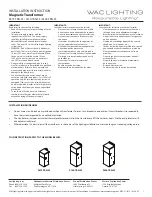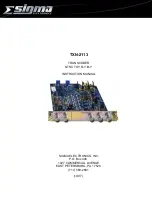
TIMTER™ Multi
-mode Dual
Telemetry Transmitter
81
Quasonix, Inc.
6.3.1
EMI Performance
Every Quasonix transmitter is designed to operate reliably and unobtrusively in the most challenging environments.
This includes electromagnetic interference and compatibility (EMI/EMC) requirements. More specifically, all
Quasonix transmitters in the TIMTER™ family (2 cubic inches and above) have been de
signed to comply with the
following requirements of MIL-STD-461G (and MIL-STD-461E and -461F, when those now-obsolete standards
have been applied):
Table 15
: TIMTER™ EMI Compliance
Requirement
Description
CE101
Conducted Emissions, Audio Frequency Currents, Power Leads
CE102
Conducted Emissions, Radio Frequency Potentials, Power Leads
CE106
Conducted Emissions, Antenna Port
CS101
Conducted Susceptibility, Power Leads
CS114
Conducted Susceptibility, Bulk Cable Injection
CS115
Conducted Susceptibility, Bulk Cable Injection, Impulse Excitation
CS116
Conducted Susceptibility, Damped Sinusoidal Transients, Cables and Power Leads
RE101
Radiated Emissions, Magnetic Field
RE102
Radiated Emissions, Electric Field
RS101
Radiated Susceptibility, Magnetic Field
RS103
Radiated Susceptibility, Electric Field
Quasonix transmitters have been tested for compliance with these standards approximately annually since 2004.
However, such testing is only performed as part of a qualification program, and the test results are the exclusive
property of the customer who paid for them. If you need EMI testing on a particular part number, please contact
[email protected] for a quote.
6.4 Carrier Frequency Tuning
The carrier frequency is sele
ctable in 0.5 MHz steps. Frequencies supported by TIMTER™ Dual Transmitters are
listed in Table 16. For higher power requirements, contact Quasonix.
Table 16: Carrier Frequencies (MHz)
Band ID
Code
Band
Minimum
Freq
Maximum
Freq
Default Freq
Tuning
Steps
Max
Power
A
Lower S
2200.5 MHz
2300.5 MHz
2250.5 MHz
0.5 MHz
10 W
B
Mid C and Euro Mid C
5091.0 MHz
5150.0 MHz
5150.0 MHz
5250.0 MHz
5120.0 MHz
0.5 MHz
10 W
















































